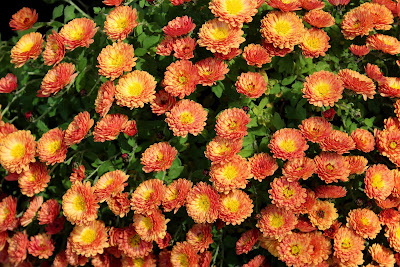Chrysanthemums are the second most popular flowers in the world, next to rose. (of course!) There are 40 wild species and thousands of varieties of chrysanthemums. These varieties can differ in size, colours and number of blooms per stem.
Chrysanthemums symbolize optimism and joy, so obviously we need these flowers in our bouquets! With so many varieties, how do you choose? With the help of Bloomex, that question became easier to answer!
Check out these most popular varieties that will accent any bouquet perfectly! With an assortment of colours available, chrysanthemums are the flower to choose!
Anemone: These flowers have a two to three different types of petals in one bloom. The variety called "Angel" has a yellow center and small lavender-colored petals that create the cushion, in addition there are outer petals that are somewhat larger and are usually colored in dark purple with white tips. With a raised cushion-like center, the Anemone mums are perfect to add texture to your bouquet.
Pompon: These flowers have a small globular bloom, somewhat flat when young but round when mature. Size ranges from small button types to large disbudded blooms up to 4 inches in diameter. The petals curve towards the middle and fully cover the center.
Spoon Mums: These are daisy-like flower with a center disk and one or more rows of petals, the petals are shaped like spoons at the tip. With a center disk that is visible and round, varieties can grow at least 4 inches in height.
Irregular Incurve: Incurve blooms have petals curving inwards towards the center of the bloom. These mums feature large blooms between 6 to 8 inches! A few petals at the bottom of the bloom add fringe to the stem. How tight or loose the petals are to the center depends on the variety, but the blooms are typically spherical.
Single and Semi-Double: These daisy-shapes blooms have a central section of disk florets that is surrounded by one to seven rows of petals. Their total plant size is between 1 to 3 feet, making them ideal for small spaces and borders around your garden.










No comments:
Post a Comment